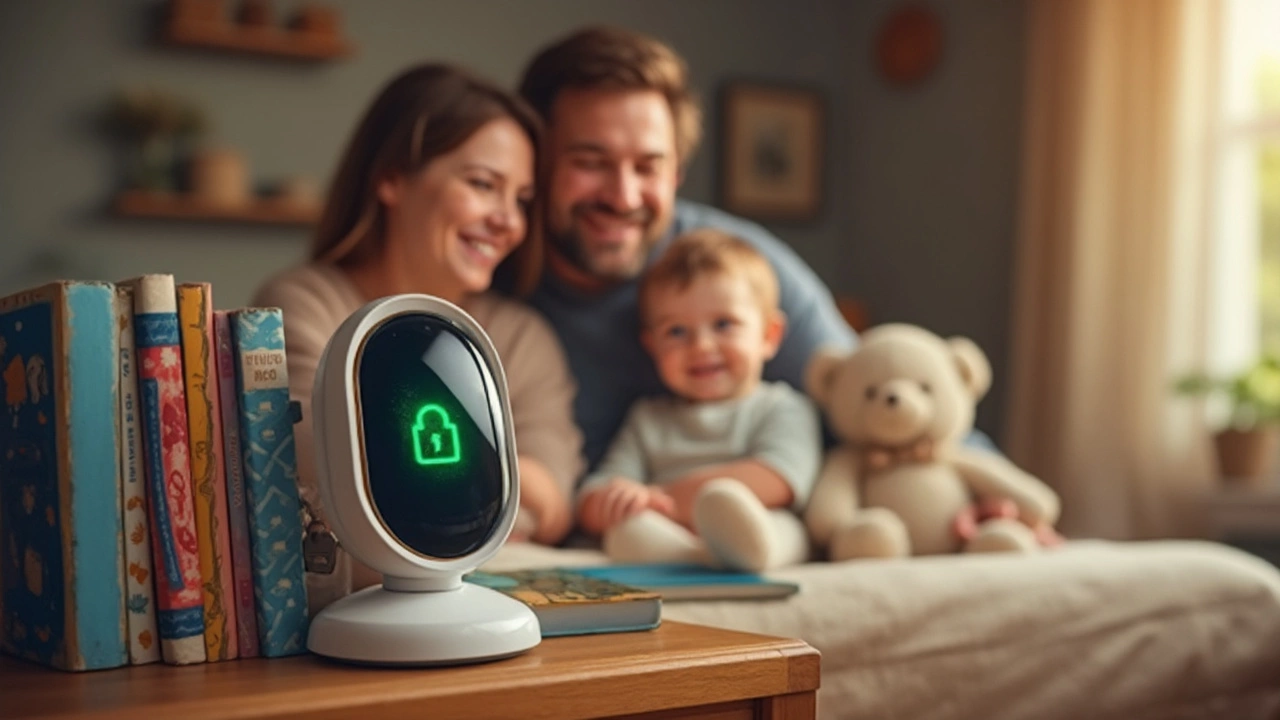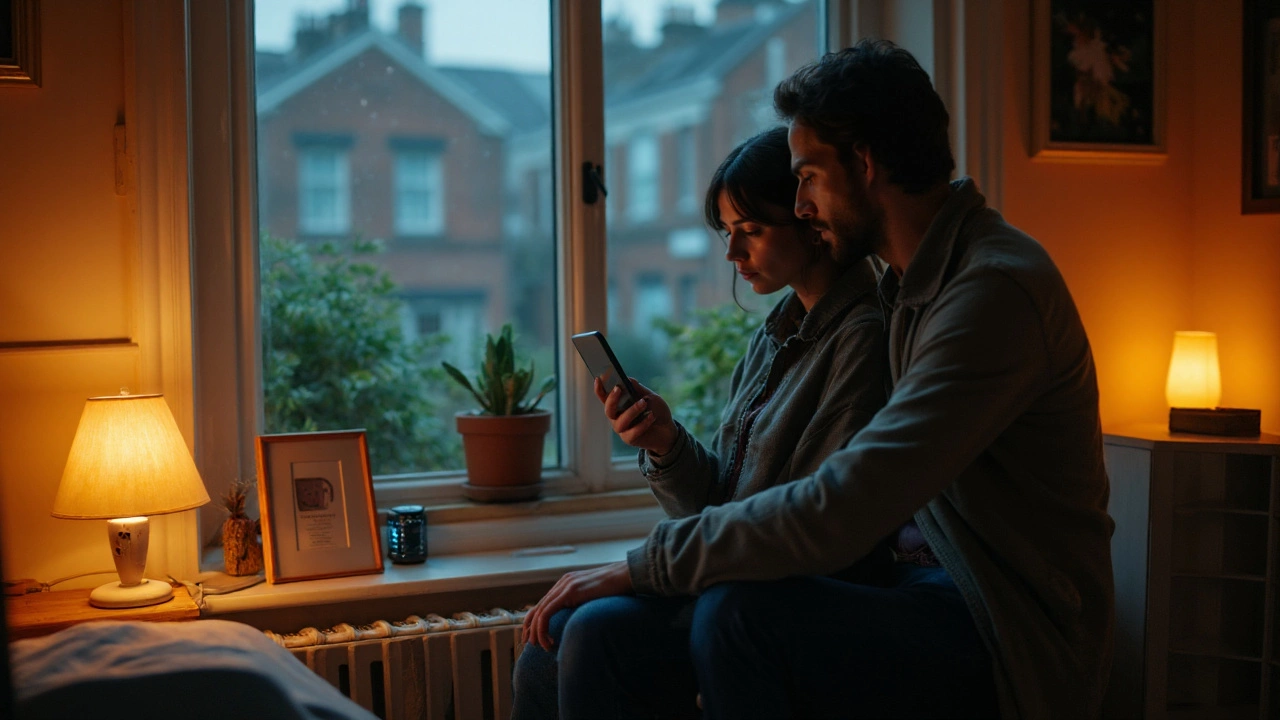Can Someone Connect to My Baby Monitor? What Parents Need to Know

You'd think a baby monitor is just an extra set of eyes or ears, but it's basically a tiny computer with a direct line into your home. Most parents assume only they’re watching or listening, but that's not always the case—especially if your monitor is connected to WiFi or the internet. If the device isn’t set up right, or if the brand cuts corners on security, someone outside your home could tune in without you knowing.
This isn’t just tech paranoia either. There have been reports of strangers yelling into WiFi monitors, streaming video of nurseries across the globe, or even simply eavesdropping quietly. Some parents only find out when creepy voices come through the speaker or when they spot weird activity on their device history. If you use a monitor that connects to your phone or the cloud, you have to treat it like any smart gadget: it needs real protection.
- How Baby Monitors Work (and Where Gaps Appear)
- Real Risks: Hacked Baby Monitors in the News
- Choosing a Safer Baby Monitor
- Easy Tips to Lock Down Your Device
How Baby Monitors Work (and Where Gaps Appear)
So, what’s really going on inside your baby monitor? At the core, there are two main types: analog and digital. The old-school analog ones use radio waves—think of walkie-talkies—which anyone nearby could pick up with the right gear. Most modern options are digital and connect either directly (over radio waves) or through WiFi and the internet, making them as convenient as your smartphone, but with some real trade-offs.
If you buy a WiFi-enabled or “smart” monitor, video and sound from your nursery zoom up to the cloud and back to your phone or tablet. This lets you check your baby from anywhere—but it also means there are more ways for someone else to sneak in. Digital monitors should scramble (encrypt) the feed, but some cheaper brands skip this step or use weak passwords you never change. Even top brands have been caught using the same default codes for all customers, which makes things easy for hackers who know what to look for.
If you’re curious about what’s most common, here’s a quick look at the types of baby monitors and their basic pros and cons:
| Type | Connection | Vulnerabilities |
|---|---|---|
| Analog | Radio wave (not WiFi) | Anyone nearby can pick up the signal |
| Digital (Non-WiFi) | Encrypted radio; direct between devices | Safer, but some encryption is weak |
| WiFi/Smart Monitor | Internet/cloud-based; app access | Hacking possible; usually weakest point is the user password |
The big point: No system is totally bulletproof. Simple analog monitors are easy to eavesdrop on if someone is close by. WiFi monitors expand the reach but depend on passwords and updates. If you forget to change default credentials or ignore software updates, your nursery might be more public than you’d ever want. Understanding the gaps is the first step to fixing them—you can’t protect what you don’t know about.
Real Risks: Hacked Baby Monitors in the News
When parents talk about baby monitor security, it’s not just some online rumor. There have been actual cases hitting the news, and some of them are pretty unsettling. Back in 2015, a family in Washington was horrified when their Foscam monitor started playing loud music and a stranger’s voice called their baby by name. Turns out their WiFi-connected monitor was wide open to the internet with a default password anyone could find online. Other incidents have hit big headlines too. In Houston, a hacker took control of a family's monitor, shouted at their kid, and even made rude comments to the parents at night.
It’s usually the cheap, off-brand monitors or ones that haven’t had a software update in years that get targeted. In 2018, a report from Which? (a UK consumer watchdog) found that eight out of ten tested baby monitors had major security flaws—they could be accessed by anyone with basic skills and some free software.
| Year | Incident | Brand Affected |
|---|---|---|
| 2013 | Stranger taunted baby and parents | Foscam |
| 2015 | Monitor played songs, used child’s name | Foscam |
| 2018 | 8 out of 10 monitors hackable (UK test) | Various |
| 2020 | Live nursery feeds found online | Multiple brands |
Don’t think only high-tech hackers are a threat. Sometimes, it’s just a neighbor with a cheap radio scanner grabbing the signal on an older analog monitor. Or a bored teenager stumbling upon your nursery feed from a search engine indexing unsecured webcams. These things don’t just happen on the other side of the world—they’ve happened to everyday parents in regular neighborhoods.
Staying alert to these real stories isn’t about paranoia, but about knowing how your devices work. It’s clear now that baby monitor security and privacy aren’t optional—they’re as critical as locking your front door.

Choosing a Safer Baby Monitor
Not all baby monitor security is created equal. When you're shopping for a monitor, brands throw a ton of features at you—HD video, remote pan, two-way talk—but you have to pay attention to what matters for privacy and hacking protection.
Start by checking if the monitor uses end-to-end encryption. That means your video feed is scrambled while moving between your home and your phone, so no random person could watch along the way. Monitors from brands like Nanit, VAVA, and Arlo have started including this, but you need to double-check the packaging or company page. If it only says 'encrypted,' that might mean just part of your video is safe—not all of it.
Also, look for password protection and regular automatic updates. If your monitor never updates, holes in its security might never get patched. Steer clear of off-brand monitors you find on mega-discount sites. In 2023, security researcher Paul Marrapese found several cheap models on Amazon that let anyone with the right app tune in—no password needed at all!
- Non-WiFi monitors (the old-school radio ones) are almost impossible to hack remotely, but anyone with a radio scanner nearby could listen. Still, this is way less common than hacking through the internet.
- For WiFi or app-based models, always pick ones that let you change the default password to something unique. Avoid any device that uses "admin/admin" or "1234" as its login—hackers try those first.
- If you care about updates, research if the manufacturer is still active. Monitors that get zero software patches after two years can get risky.
Here’s a quick side-by-side look at some popular choices:
| Model | Encryption | Auto Updates | Password Protection |
|---|---|---|---|
| Nanit Pro | Yes (end-to-end) | Yes | Yes |
| VAVA | No (analog) | No | N/A |
| Arlo Baby | Yes (end-to-end) | Yes | Yes |
| No-Name WiFi Monitor | Rare/Unclear | Rare/None | Weak/None |
Chasing the newest tech is tempting, but for parenting peace of mind, make security a must-have—not just a bonus feature.
Easy Tips to Lock Down Your Device
It’s totally possible to make your baby monitor security way stronger, even if tech isn’t your thing. You just need to tackle a few basics that too many families skip.
- Change the default password — right away. A lot of monitors come with super simple passwords like “admin” or “1234.” Hackers know these—they’re the first thing anyone tries. Make your password long and mix up letters, numbers, and symbols.
- Update the firmware anytime you get a notification. Think of it as an allergy shot for your monitor. Brands send out updates to patch holes hackers might sneak through. If your monitor doesn’t update on its own, check the app or the website every couple of months.
- Use your home WiFi’s guest network for your monitor if you can. That keeps it one step removed from your main setup (where your work files and family photos live).
- Turn off remote viewing when you’re home. If you’re not using the monitor’s app outside, there’s no need for it to be open to the internet. Most hacks happen because the stream is visible to the outside world.
- Double-check the app permissions. Some monitor apps grab way more info than they need—like your contacts or location. Go into your phone’s settings and switch off anything extra.
Here’s a quick snapshot showing just how often monitors with weak security get targeted, as reported in a 2023 consumer tech review:
| Monitor Type | Hacking Reports per 1,000 Devices |
|---|---|
| Default password, outdated | 47 |
| Custom password, updated | 3 |
If your monitor is an analog-only audio monitor (not WiFi or app-based), the odds of someone listening in are super low—unless they’re hanging out nearby with special radio gear, which is rare. But anything linked to your phone, Alexa, or the internet should be on your privacy radar.
It’s all about making your device just a little trickier than the next. Hackers move on fast if things aren’t easy.

